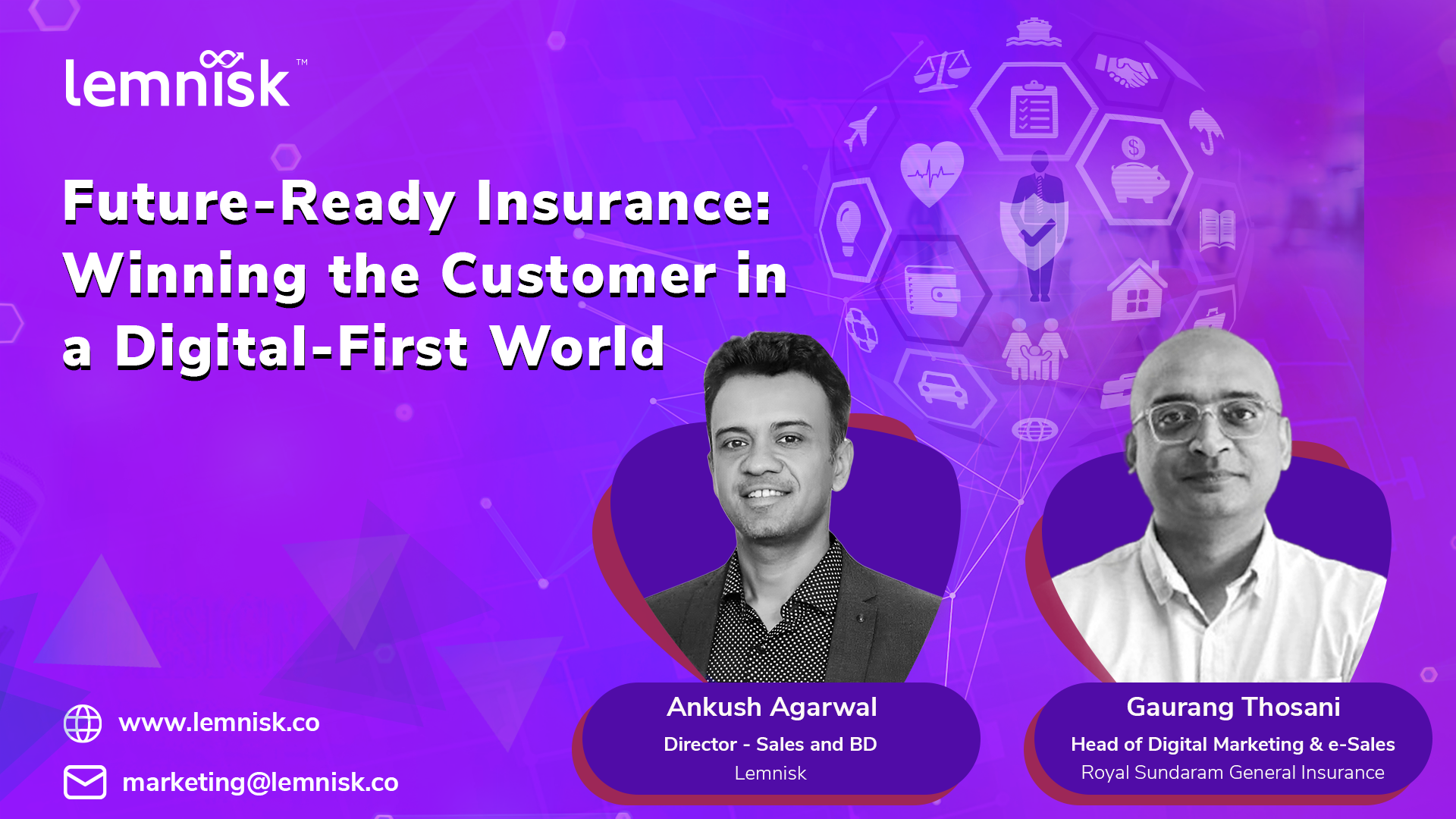In an engaging podcast session hosted by Ankush Agarwal, Director – Sales at Lemnisk, Gaurang Thosani, Royal Sundaram General Insurance’s Head of Digital Marketing and e-Sales, provided profound insights into the way insurance in India is changing very quickly. With the entry of 100% FDI in the industry and the fast pace of digital adoption, Gaurang provided a reality check yet visionary perspective on how insurers must remain ahead of the game.

1. Emerging Competition and the Indian Insurance Environment
Gaurang kickstarted the conversation by touching upon a significant infrastructural shift in the Indian insurance sector—the 100% FDI approval. While this should draw new players into the Indian market from overseas, he was positive that established local players such as Royal Sundaram are adequately equipped to face the added competition. Their trump card? An intimate knowledge of the Indian consumer and a long-standing focus on trust and service.
2. Reimagining Customer Engagement: Beyond the Transaction
Insurance, by definition, is trust, and trust is established not only during purchase but during the entire customer experience. Gaurang underscored that insurers need to move beyond transactional interfaces such as policy buying, renewal, and claims to provide context-based and relevant engagement. He outlined Royal Sundaram’s vision of building a safety net that not only safeguards but also adapts to the customer’s requirements. Customer engagement, he feels, needs to be timely, personalized, and based on delivering true value.
3. The Evolution of Omnichannel Marketing
Among the clear highlights of the discussion was the shift from multi-channel to truly omnichannel marketing, where online and offline conversations are integrated and contextualized. Gaurang demonstrated this with a simple but compelling example: the giving of tax certificates for health insurance. Although the discovery and exploratory phases have become increasingly digital, Royal Sundaram continues to place a high value on human touchpoints through agents and physical outlets. This blended strategy guarantees convenience and trust.
Just as important is the emphasis placed by the company on data security and compliance. Gaurang added that no digital product or service is made live without a rigorous check by their INFOSEC team, highlighting the organization’s commitment to customer privacy and trust.
4. Streamlining the Insurance Experience
Insurance policies tend to be seen as confusing and opaque. Gaurang emphasized the need to make the whole customer experience—from discovery and buying to after-sales service—simpler. Royal Sundaram has pursued a dual approach: increasing the availability of information and clarity of communication. These encompass using multi-lingual customer information forms, simplified terms and conditions, and having customers sign off on and verify main policy details before issuance. The idea is to demystify insurance and establish confidence among customers.
a. Data-Informed and Active Engagement
Today’s customer wants personalized experiences, and that begins with a single, unified view of data. Gaurang underscored the instrumental role of Customer Data Platforms (CDPs) in unifying disparate data points by channel and stage in the customer lifecycle. But he made it clear that it’s not merely about gathering data—it’s about extracting actionable insights that enable brands to engage proactively. Whether predicting a renewal or recommending value-added services, proactive engagement fosters deeper, trust-based relationships.
b. The Revolution of AI in Insurance Marketing
Perhaps the most revolutionary force redefining insurance in the present is Artificial Intelligence. Gaurang talked about how AI is being utilized throughout the customer experience, ranging from grasping behavior at product discovery to providing live, personalized assistance after the sale. AI facilitates quicker analysis of data, generating insights, and targeted engagement strategies. Yet he also warned that innovation in this domain calls for the convergence of data science acumen, customer psychology, and speed to remain up-to-date with fast-evolving innovation.
He likened the emergence of AI in insurance to the onset of computers in India—indicating a seismic change in the way the business will be conducted in the future. Ankush wrapped up the discussion by noting that the future of insurance marketing is long-term, trust-based relationships, driven by insights and powered by technology.
Final Thoughts
As digital transformation gathers pace across sectors, insurance firms are being pushed to not just keep pace but to set the pace for customer experience innovation. Royal Sundaram’s strategy, as outlined by Gaurang Thosani, presents a pragmatic yet visionary roadmap—based in simplicity, fueled by data, and motivated by empathy.
Insurance’s future is not about issuing policies. It’s about listening, interacting, and transforming with the customer—each step of the way.
You can catch the whole conversation below:
By Bijoy K.B | Associate Director – Marketing at Lemnisk

Leave a Reply